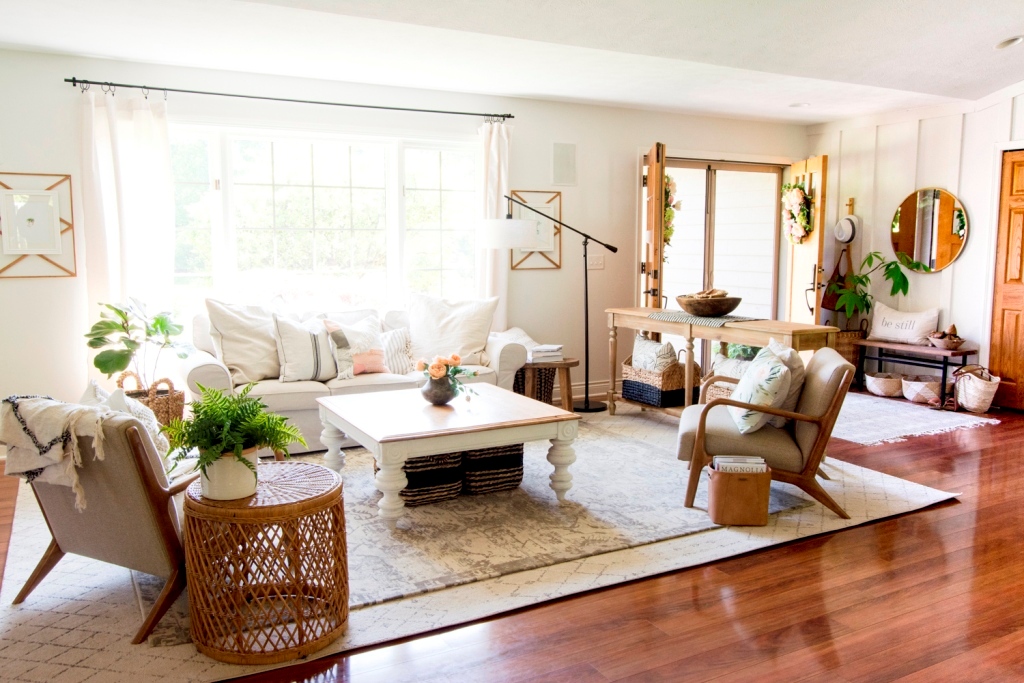The lack or absence of natural light in a room can leave the space dark, uninviting, and cavelike. This certainly doesn’t help create a comfortable vibe for the office. A lightened up space is not just more inviting, but it can also improve your overall wellbeing.
A bright room or home can help lower your stress level and boost your mood. So if you are faced with transforming a dark room with no natural light, all hope is not lost. This article reveals specific simple, yet very effective tricks you can use to lighten up your dark room or space.
1. Use more lights:

Artificial lighting in a room or area is essential, but it’s more crucial in a space that lacks natural light. A chandelier (an overhead fixture) or a pendant light is suitable for ambient lighting, but it will not be enough to brighten a dark room adequately.
You can go for recessed fixtures because they provide subtle lighting that you can spread across the ceiling to distribute light more efficiently.
You can also install spotlights in your space or room, specifically lighting up specific areas or furniture in the room. Track lighting also is effective in dark places without natural light because you can easily adjust its head to shine where you need extra illumination.
Table and floor lamps are also perfect for providing task lighting in particular spots such as beside the bed or sofa. Also, if you want to replicate the look of natural light, you can go for full-spectrum bulbs that model daylight to keep the space warm and soft.
Under-cabinet lighting adds a glow that comes from the balances and edges out of the shadow effect of bulky cabinetry. This can be added after construction with battery-operated tap lights or LED strips.
2. Whites are better:

Another way to ensure that your darkroom is illuminated well is by using lots of white because the non-hue does not absorb any color. White sends as much light as possible onto other surfaces. So if it is to lighten up the room that you seek, you should paint your walls and ceiling white. White is your classic option, but if it is too stark, you can use cream. White will reflect the room’s artificial lighting to make it look larger and brighter.
If it still seems not to be enough, you can be aggressive about it and don’t stop with walls and the ceiling. Consider bringing in other white decorative materials such as white furniture, bedding, curtains, and art frames.
3. Use rugs:

Laminate floors or dark hardwood are a popular and beautiful staple for contemporary homes. But they can also drain a lot of light from some spaces, especially ones without windows such as corridors, hallways, kitchen, etc.
using rugs on the floor will counter such flooring and give you a mix of both airiness and richness. A patterned off-white rug will be perfect because it will bring illumination and yet not show every speck of dirt on it.
4. Bring in more reflective surfaces:

While a wall painted white or cream can help make a dim room look brighter, decorating it with reflective materials and surfaces can amplify the effect—mirrors are the perfect option. They are available in different decorative frames and a variety of shapes, styles, and sizes to fit into any spot in your room.
However, to take full advantage of your mirror, you need to place it opposite a fixture or lamp so that there is plenty of light to bounce off the surface. You can also make use of furniture with a glossy or mirrored finish to reflect more light.
Reflective surfaces help to exaggerate any light within the room, making it bounce around the darkened area. Mirrors are also perfect for giving the illusion of depth, making the room feel spacious, thereby opposing the enclosed feeling in a dark room.
I will recommend you invest in a few large wall mirrors, which does not only make a statement but reflects as much light as possible.
Also, when choosing a type of paint for the walls of your room, you may want to go for a semi-gloss finish too. This is because it reflects more light than an eggshell or satin paint and holds up quite well in high traffic areas.
5. Bring in nature

You can help compensate for lack of natural light in your room by decorating it with some natural elements. Plants, in particular, can make even the most cave-like rooms feel airier and brightened.
Make use of pots in bold, vibrant colors like yellow, cobalt, or red to display your greenery and flowers to lighten up the room or space.
You can also place them at the center of your console table or coffee table or on your bookshelf. Also, be mindful that you will need to decorate with plants that tolerate low light, like spider plants or ferns, so that they do not wind up dead soonest.
Also, silk plants are an ideal alternative if you prefer a low-maintenance option.
In conclusion, there are some other means to lighten a dark room without natural light, but the above explained are the simple and most effective ones.














